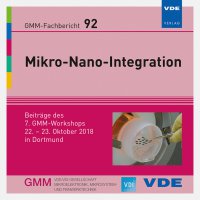New concept for post-CMOS pellistor integration
Konferenz: Mikro-Nano-Integration - 7. GMM-Workshop
22.10.2018 - 23.10.2018 in Dortmund, Deutschland
Tagungsband: Mikro-Nano-Integration
Seiten: 5Sprache: EnglischTyp: PDF
Persönliche VDE-Mitglieder erhalten auf diesen Artikel 10% Rabatt
Autoren:
Muenchenberger, Finja M.; Dreiner, Stefan; Kappert, Holger (Fraunhofer Institute for Microelectronic Circuits and Systems IMS, Duisburg, Germany)
Vogt, Holger (Fraunhofer Institute for Microelectronic Circuits and Systems IMS, Duisburg, Germany & University of Duisburg-Essen, Duisburg, Germany)
Inhalt:
Gas sensors are crucial instruments to detect the exposure of combustile and toxic gases at an early stage. The relevance to manufacture gas sensors decreasing in size and power consumption is growing continuously to reduce production costs and enable reliable handheld devices. This paper presents a new approach for processing a novel nano-pellistor. The production is based on a process used for fabricating 3D-nanostructures. A process sequence is presented which uses atomic layer deposition (ALD) and deep reactive ion etching (DRIE) to build a free-standing gas sensor above a CMOS circuit. Simulations are performed to ensure the most promising performance of the sensors. A square shape structure is the most advantageous heater with a homogeneous heat distribution. Furthermore, an expected heater power consumption of 7.18mW is determined by simulations. The investigations on the influence of an insulation layer enclosing the heater show that the temperature difference on the heater decreases from 28 °C (assumed in air) to 11 °C. A change in the pillar shape for contacting the gas sensor reduces the current density from 1.33 · 1011 A/m2 to 4.36 · 1010 A/m2.


